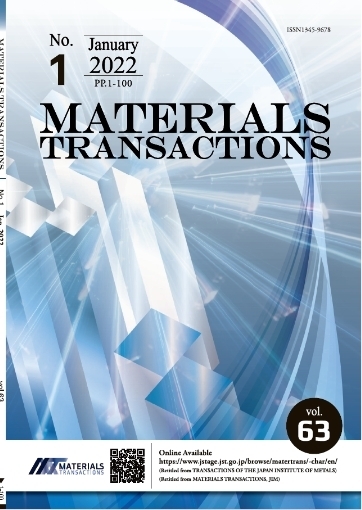High-Strength Ti-Based Alloys Containing Fe as One of the Main Alloying Elements
Dmitri V. Louzguine-Luzgin
pp. 1537-1544
抄録
As well as the most of other 3d late transition metals Fe is a good β-Ti stabilizer, has a large solid solubility in β-Ti and owing to the atomic size difference with Ti can enable significant solution strengthening. The structure and mechanical properties of Ti alloys containing significant amount of Fe (or Fe together with Co, Cu and other elements) are reviewed in the present work. At high content of the late transition metals (for example, more than about 15 at% of Fe) the structure of these alloys consist of the rounded primary dendrites of an ordered cP2 intermetallic compound and an eutectic consisting of the cP2 intermetallic compound and a supersaturated cI2 β-Ti solid solution. cP2+cI2 phase Ti–Fe alloys, their derivatives: Ti–Fe–Co, Ti–Fe–Cu, etc…, and cI2 β-Ti solid solution alloys containing Sn and Nb exhibit high compressive strength and plasticity. At lower Fe content a supersaturated β-Ti solid solution single phase structure is formed. However, these alloys also show good mechanical properties especially when alloyed with Sn and Nb. The structure and properties of various kinds of such alloys are discussed in the present paper.
他の人はこちらも検索
MATERIALS TRANSACTIONS Vol.59(2018), No.9
MATERIALS TRANSACTIONS Vol.59(2018), No.9
MATERIALS TRANSACTIONS Vol.59(2018), No.10










